Welcome to our guide to the best free website builders. Creating a website doesn’t always have to mean spending a ton of precious time and money. In this guide, we look at website builders that allow creative professionals to build websites quickly, and without parting with cash.
Of course, there are strings attached with even the best free website builders. They don’t offer the same range of features or as much support as paid services. Website builders also tend to restrict the storage and bandwidth in their free plans to encourage people to upgrade. Free website builders also tend not to come with a top-level domain name. That means you often have to make do with a subdomain, such as yourwebsite.weebly.com, which can look a little unprofessional.
If you are serious about building your own website to further your career in the creative world or to promote your own creative business, we highly recommend opting for one of the paid-for best website builders, at least in the long run. But if you want to test the waters before you make that kind of commitment, this list of free website builders is a good place to start.
The best free website builders today
Why you can trust Creative Bloq
Our expert reviewers spend hours testing and comparing products and services so you can choose the best for you. Find out more about how we test.
Wix (opens in new tab) offers website development services to individuals and businesses of all sizes. The primary appeal of its website builder is the versatility of the platform, which allows you to pick from a vast collection of pre-built templates and customise the look and feel of your website to find something that suits, whether you’re a construction company or a graphic designer.
Wix uses a drag-and-drop website builder, and it’s one of the most intuitive that we’ve tried. It comes with a collection of over 800 templates to choose from, and all templates can be further customised using the simple drag-and-drop UI.
For those looking for an even simpler option, Wix’s built-in artificial intelligence allows you to create a website by answering a series of questions. While this approach lacks customisation, it’s great if you want to get started super quickly. Wix also has its own free blogging platform, but ecommerce features require a paid subscription.
Sadly the free plan does have some substantial limitations. You’re restricted to using a subdomain, such as yourwebsite.wix.com, you have no more than 500MB storage and 1GB bandwidth. Finally, a free Wix site displays a banner ad on every page.
See our full Wix review for more details.

As of writing, there are 30 million websites hosted on Weebly (opens in new tab), which is owned by Square, Inc. The drag-and-drop website editor is just as intuitive as Wix’s and can be used to further customise one of the many pre-defined templates. However, it’s somewhat barebones.
The template library is not as extensive as Wix’s, and the editor doesn’t offer the same amount of creative freedom. On the plus side, the simplified interface makes it a great option for beginners. But the biggest advantage of Weebly in our eyes is the free ecommerce features. Users to sell items on their websites even on the free plan.
If that sounds too good to be true, we should stress that there are some limitations. A transaction fee of 3% is applied to every ecommerce purchase made on a free website. Again there’s no top-level domain, although the subdomain name can be customised to your liking. Weebly’s ads are also less intrusive than Wix’s banner, but it does have drawbacks too, the biggest being the lack of creative freedom with the site builder and a missing undo button.
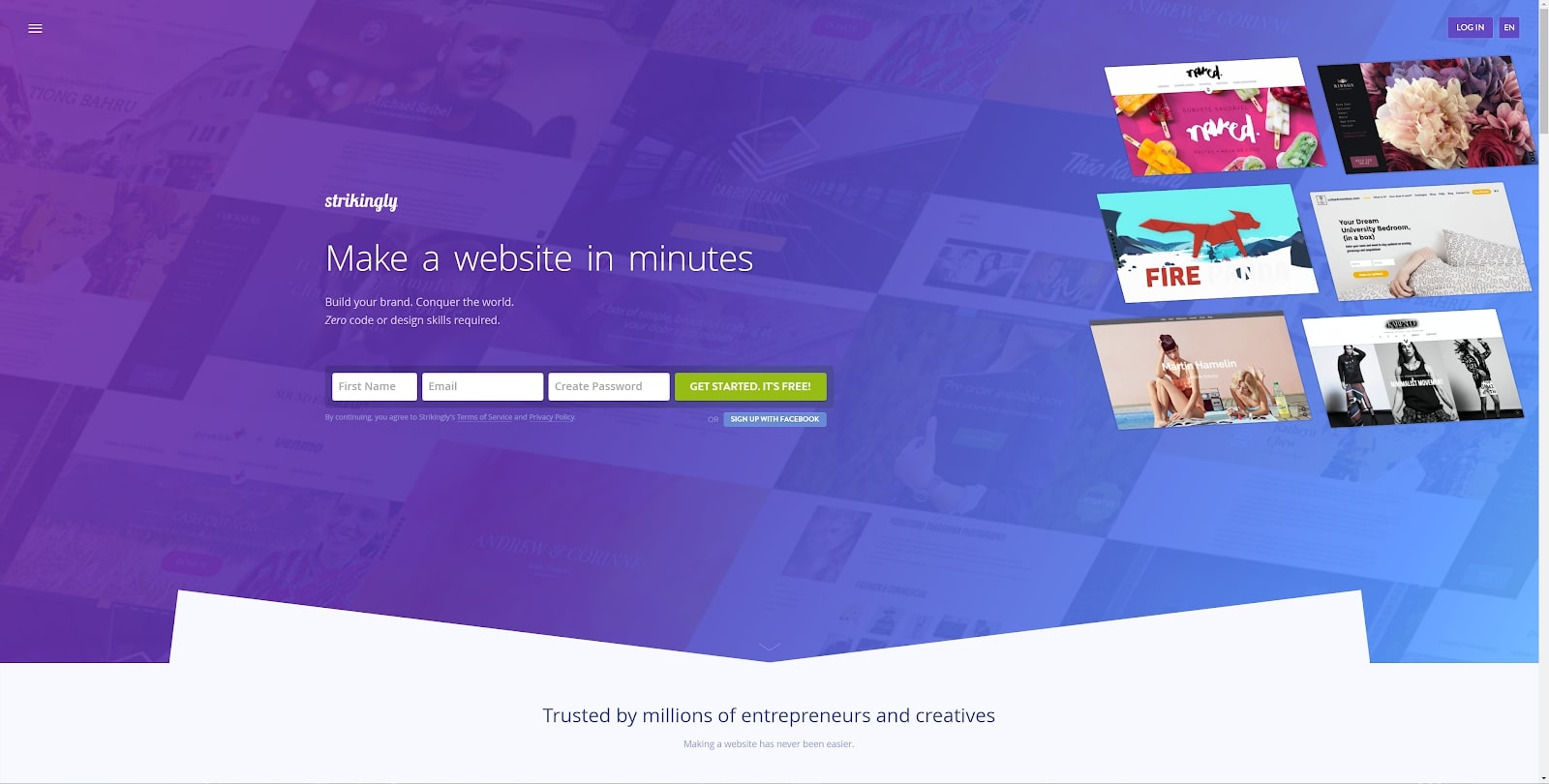
Launched in 2012, Strikingly (opens in new tab) is a simple website builder best used for building single-page websites, such as personal portfolios. Like all the other website builders on this list, Strikingly doesn’t require any knowledge of coding or web design. In fact, it’s probably the easiest website builder currently available.
Strikingly’s approach is mobile-first. As a result, it focuses on delivering responsive websites that load fast and require low resources. Customisation is pretty restricted, although you can change your website template whenever you want, even after making the site live.
The lack of creative control is evident here – if you think that Wix lacks design freedom, strikingly probably won’t be to your taste. The upside of this is that there is practically no learning curve. Other advantages include 5GB monthly bandwidth and 24/7 customer support, even on the free plan.
Your free website can have up to five pages and a simple store with one product, but we don’t recommend using Strikingly to build creative business websites. It’s more suited to building small portfolios and personal websites.
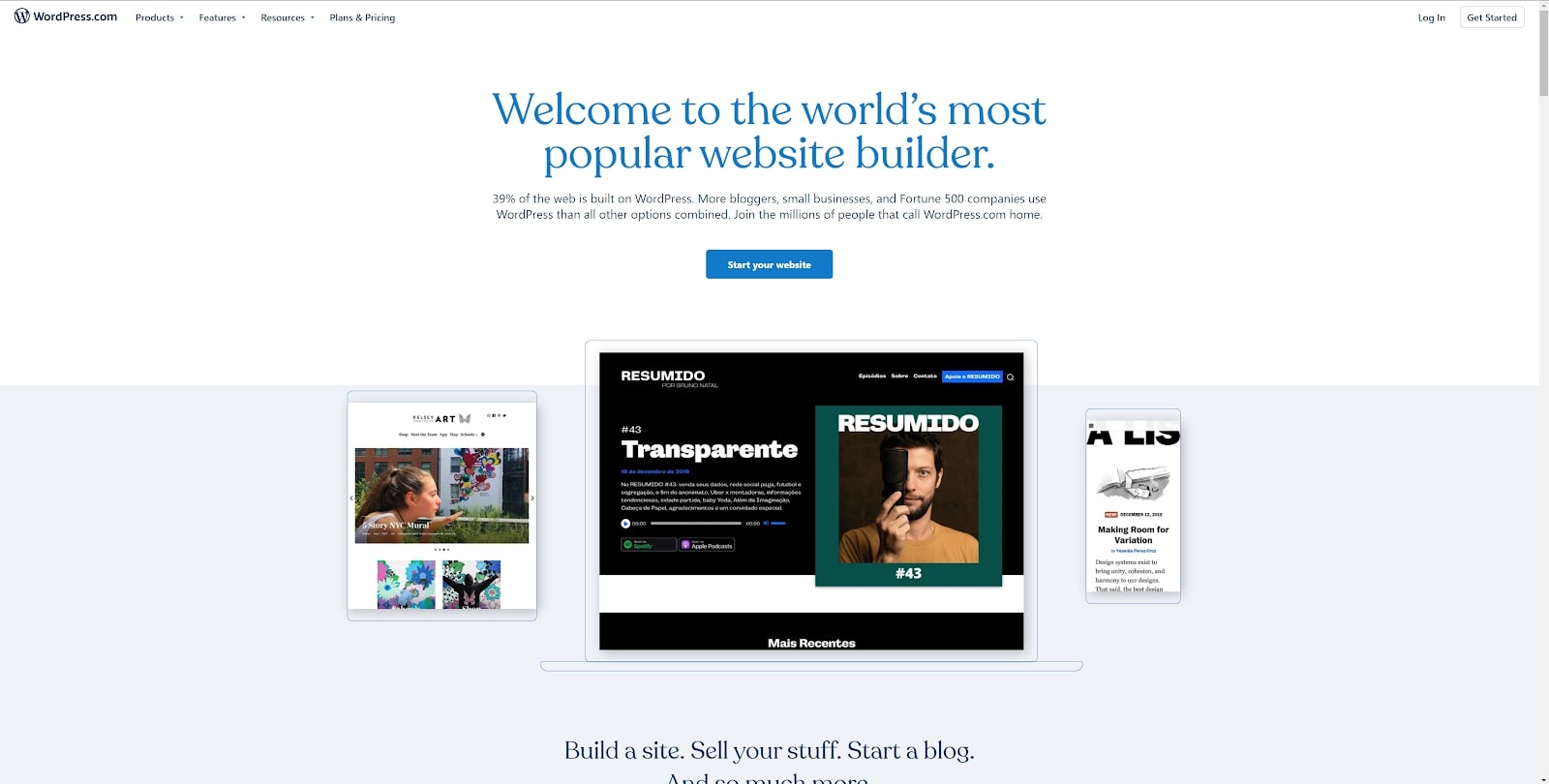
WordPress.com (opens in new tab) is a self-publishing platform owned by Matt Mullenweg’s Automattic, Inc., run on a modified version of the WordPress CMS. It’s one of the most popular blogging platforms in the world, and rate it highly for hosting a creative portfolio or personal journal.
It offers a slew of blogging-related features, including in-depth analytics, a comment system, social media integration, and SEO. There’s also a good collection of free and paid templates to choose from. The free plan comes with 3GB storage, which is plenty for static websites, but not necessarily enough for media-heavy blogs.
WordPress.com’s site builder isn’t the easiest to use, however. There is a steep learning curve for beginners, although starting a new blog and publishing your first post should be simple enough for most people, and there are lots of resources and helpful posts available online providing advice.
The free plan comes with a .wordpress.com subdomain and a small banner ad distributed on every page of the website. Paid plans offer more storage and a top-level domain, starting at $4/month.
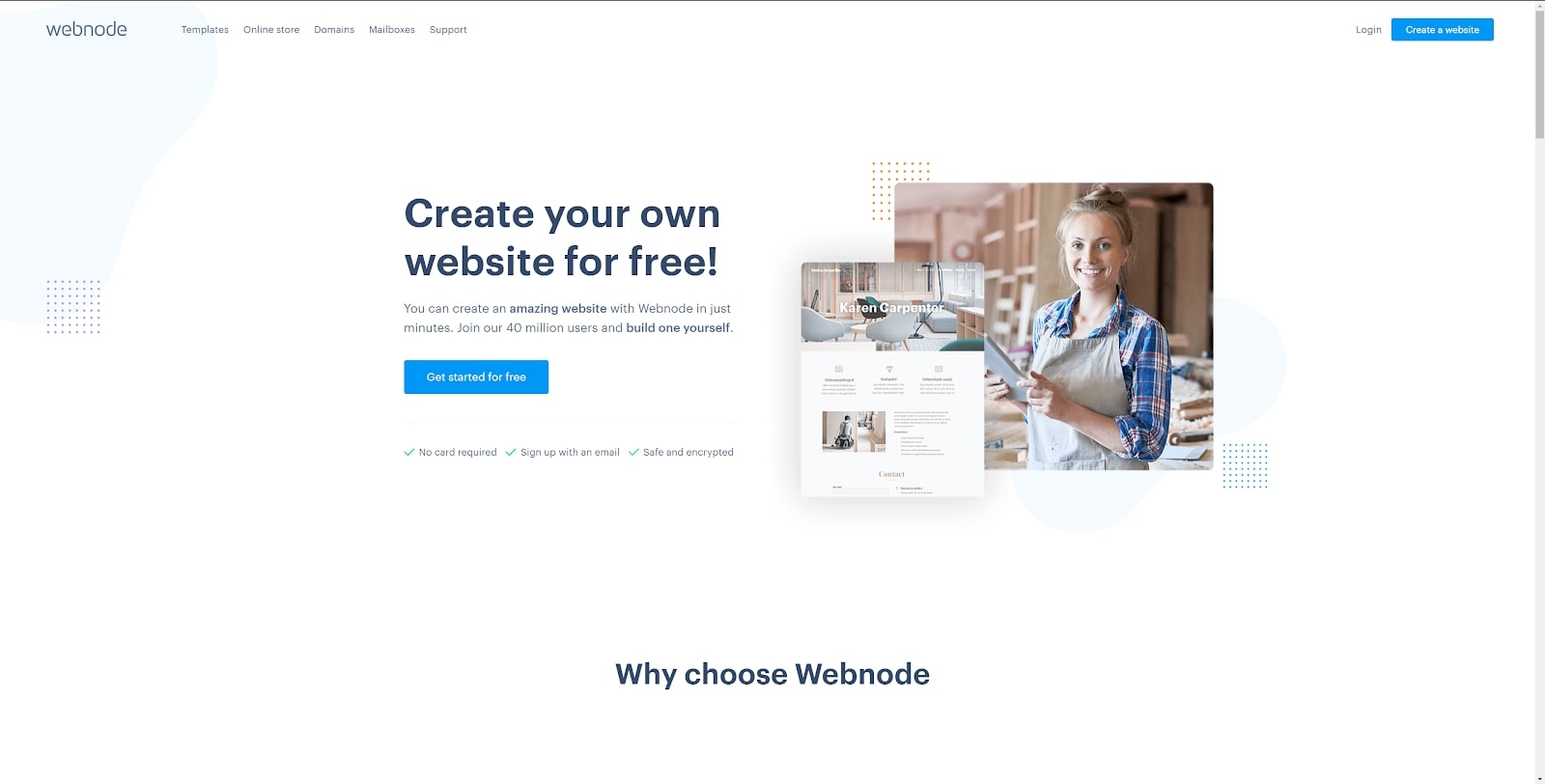
Webnode (opens in new tab) is a cloud-based website builder from Westcom, a company based in the Czech Republic. It used to be somewhat clunky, but the site editor has been updated and now features a more modern, if basic, interface.
Webnode’s site builder may not be the most creative, but it has responsive templates and allows you to knock up a website quickly. It’s easy to use, and the predefined templates are minimal but bright and colourful, making them good for event websites.
Webnode’s blogging features are quite basic and ecommerce support isn’t available. There’s also little to no integration with third-party apps and services, and no app store. This may enhance simplicity but it ends up seriously restricting one’s creative freedom.
Webnode’s free plan, called Limited, restricts you to a .webnode.com subdomain. There is a storage limit of 100MB on the free plan, which is also ad-supported. The advertisement itself, though, is fairly non-intrusive, with a simple grey banner in the footer of your website. No credit card information is required during sign-up.

Jimdo (opens in new tab) is a free ecommerce website builder that allows you to create web pages in up to nine languages. Its services suit business websites with a storefront and creative stores looking to establish themselves online.
This website builder walks the path of simplicity, not elegance. It’s easy to use but while the template designs are modern enough they lack any kind of creative freedom. There’s also a limited number of templates, but then that can sometimes be an advantage since it means you’re not overwhelmed with options.
There are plenty of site builders that are both simple and more powerful, but where Jimdo shines is that there’s no transaction fee on ecommerce. You can only sell up to five products at a time with the free plan, but at least you don’t pay commission on that, which makes it an option if you’re testing the waters or only have a limited offer.
The footer ad is non-intrusive, showing up as a small logo and a link instead of an attention-hogging banner. Again, have to use a subdomain with your free plan, and sadly ‘.jimdofree.com’ doesn’t have a very professional-sounding ring to it.
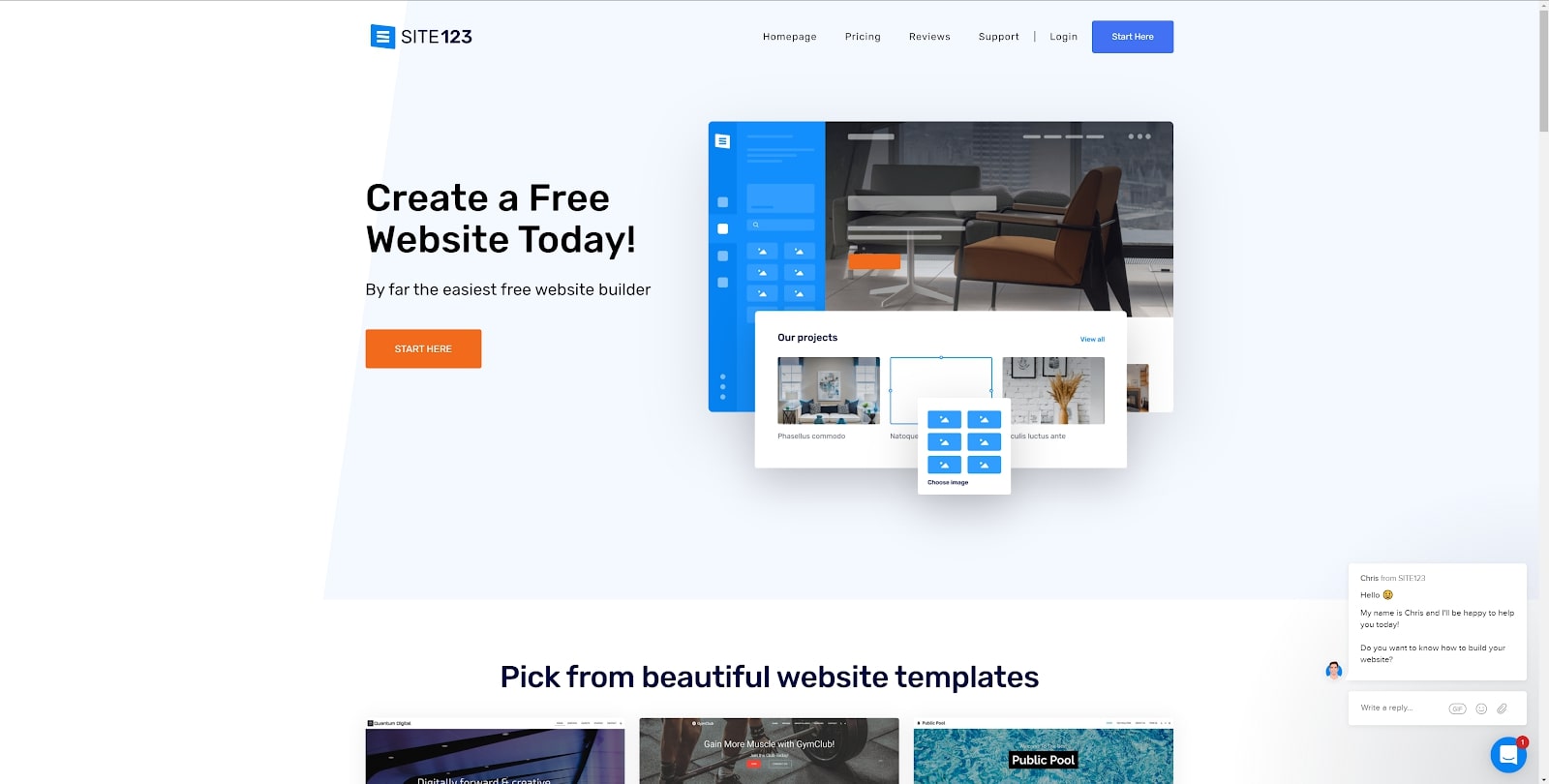
Founded in 2015, Site123 (opens in new tab) is another website builder that helps designers and developers create websites with little to no fuss, but it lacks the flexibility offered by mainstream options like Wix and Weebly. It doesn’t have any pre-designed templates to choose from. Instead, you must rely on its design assistant, which offers you a choice of 16 industries.
It then asks you to pick a name. Once that’s done, Site123’s own algorithm takes care of the rest. It’s a quick and easy process but the resulting designs are somewhat bland and outdated, with limited customisation options. If you’d like to build a personal website in a rush, Site123’s free plan might be a good idea. For small creative businesses and serious professionals, however, the options here are fairly limited.
The free plan doesn’t come with a top-level domain, so a free website will have to use the subdomain of site123.me. There is no option to connect your free website to a domain that you already own either. The free plan has 500MB of storage, and a non-intrusive banner ad appears at the bottom of every site page. The best aspect of the service is the chat support team, which we’ve found to be quick to respond.
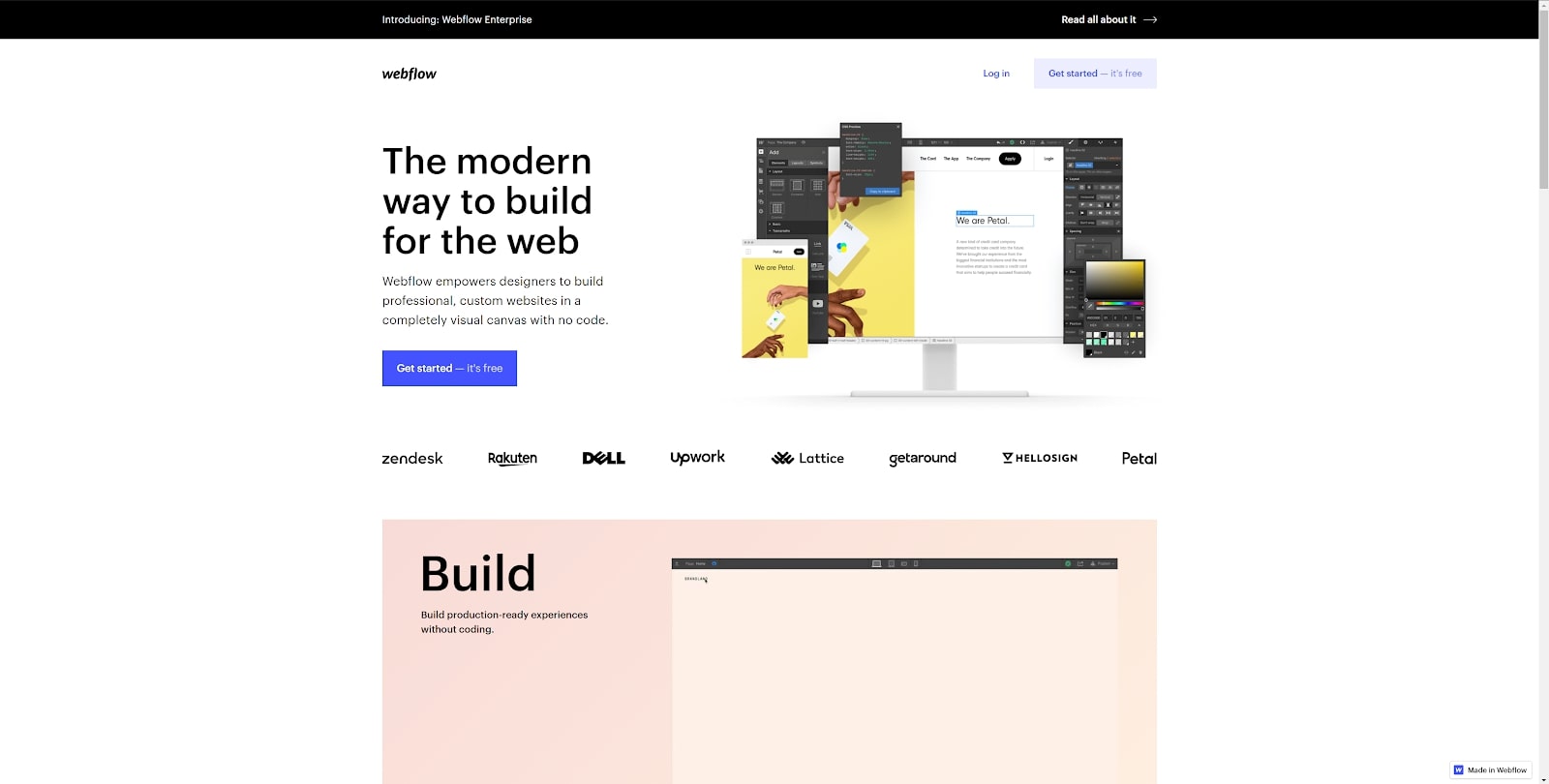
Webflow (opens in new tab) is web builder aimed at developers and designers. While most of the website builders on this list are meant for beginners, Webflow is much more advanced, with ample customisation options but also less hand-holding.
It doesn’t require knowledge of HTML and CSS, but it’s still good to know a bit of coding, as that opens you up to completely new possibilities. There are many interesting features, like drag-and-drop widgets for your website, ways to insert maps and videos, and more.
While the site editor has a steeper learning curve, Webflow also has a huge amount of help material available in its knowledge base, and you also get premium analytics tools. Automatic updates mean that you will never have to worry about maintenance, unlike on a content management system such as WordPress, and Webflow is built on Amazon Web Services, which offers great scalability.
Technically, you can use the website builder free of charge and then export your website to the platform of your liking. However, Webflow also offers content management and hosting services for those who need them. The free plan doesn’t require a credit card, but you do need a paid plan in order to take your website live via the Webflow platform. Otherwise, you can publish your site to webflow.io for free, though it does put a small logo ad at the bottom of your site.
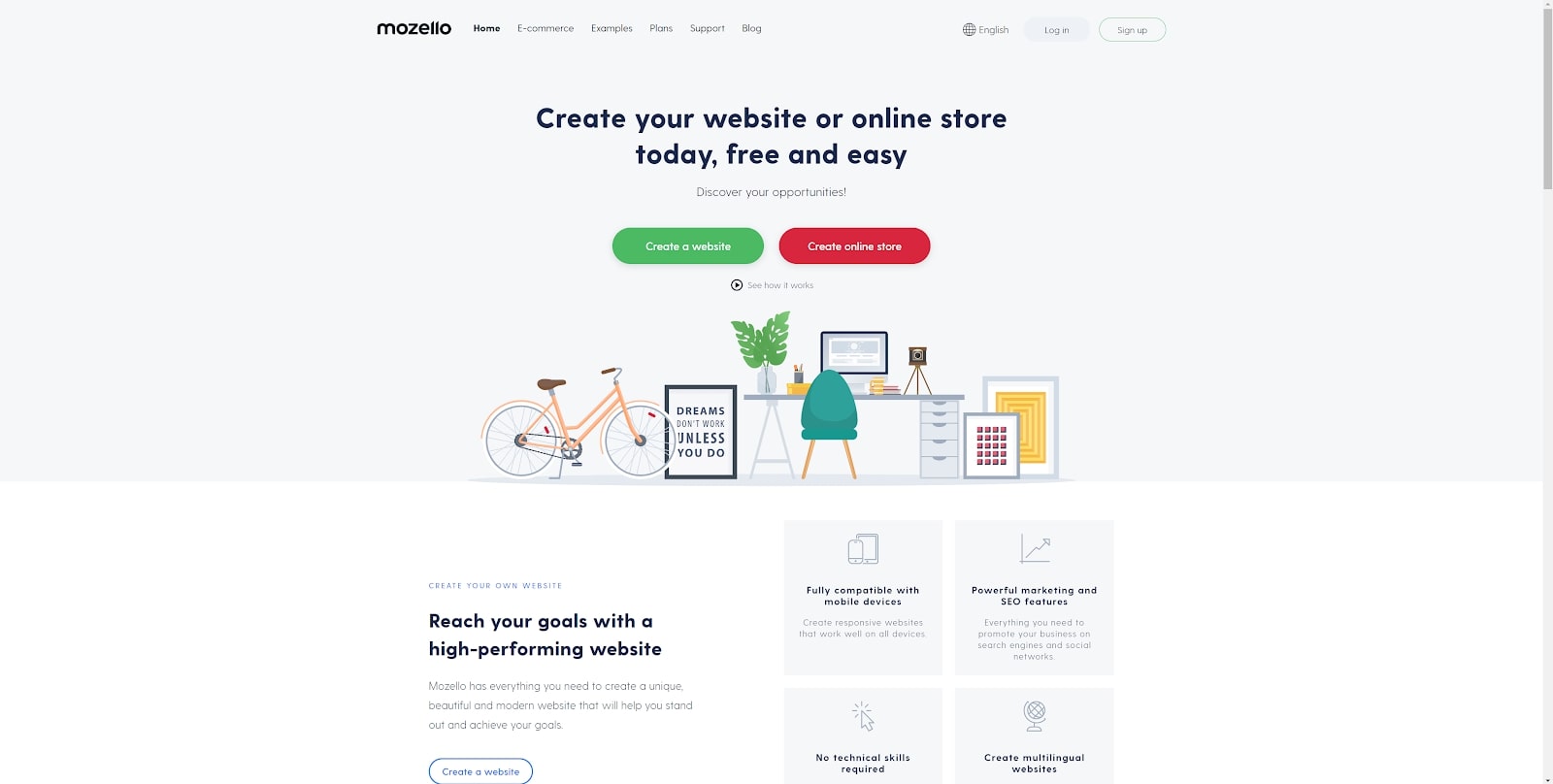
Mozello (opens in new tab) is a relatively small website builder with little in the way of creative control. However, its multilingual features set it apart and make it an interesting option for companies spanning different regions of the world.
Most websites that provide multilingual services don’t do so for free, but Mozello is a welcome exception to the rule. You can select from a range of languages and then create separate versions of your website in those languages to serve regional requirements.
There are 48 templates to choose from. However, we found they allow for little to no customisation. The drag-and-drop site editor is somewhat clunky too, and you may not always be able to achieve the perfect layout.
Free websites have to use the .mozello.com subdomain and display a small link to Mozello at the bottom of every page, and the online store can only showcase up to five items at a time. The free plan has 500MB storage, but you can always upgrade to a paid plan for more.
Read more:





























